Abandoned School Becomes Artists’ Residence
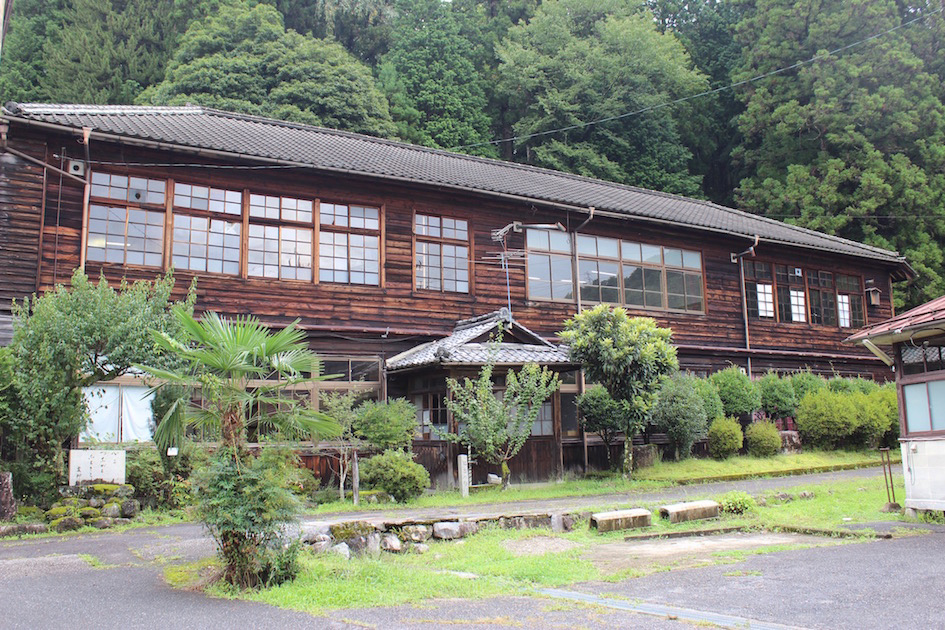
While Tokyo may be considered the epicenter of contemporary art in Japan, there are an increasing number of art projects taking place in more rural areas. These locations are at times difficult to access, but offer the unique experience of encountering art in alternative spaces, such as vacant houses, old factories, or disused schools. These venues are different from the typical “white cube” gallery that one finds in the city. “Space” is often scarce in urban centers but abundant in these more remote areas, creating great opportunities for site-specific work referencing the site’s architecture, the surrounding natural environment, and the local history and people.
What is an Artist Residency?
Artist residency programs all vary, but generally they invite artists for a certain period of time to live away from their usual environments, providing the chance to create new work reflecting their new surroundings, which often allows the artist to use new materials, build connections with new people, and of course experience life in a new location. Art residencies emphasize the importance of a thoughtful, multi-layered cultural exchange, working towards a certain immersion into another community. Across Japan there are now over 50 residencies, some of which take place annually and others held on a more regular basis throughout the year.
“I want locals to recall this place, and to once again enjoy the school by seeing it filled with art work”. – Eri Ito, NAIR Organizer and Artist
The successful artist residency Nagiso Artist in Residence (NAIR) took place over three weeks in September 2015 in the Nagano Prefecture town of Tsumago, Nagiso. Based in an old elementary school that had been closed for 18 years, this residency invited four artists – Eri Ito, Aya Miyauchi, Kaoru Soeno, and myself, Anna Gonzalez Noguchi. The organizer and participating artist, Eri Ito initiated this program after moving to Nagiso from Tokyo a year and half ago. She explained her motivation, saying “I want locals to recall the role the school once held in the community, and to once again enjoy it by seeing it filled with art work”. Ito realized the value of the building and its potential for use by artists, locals, and visitors. During the residency the four creators were warmly accommodated by home-stay families, an excellent opportunity to directly build relationships with local people and learn about Nagiso first-hand. There was also a workshop for school children using the renowned Hinoki wood of the region.
The program culminated in the final week with an open studio allowing visitors to observe the artists at work. The last two days were dedicated to an official exhibition, during which the old school building became lively once again with over 450 visitors of all ages. Tourists and local people alike, including some who studied at the school many years ago, were met by a dynamic array of installations, paintings, and site-specific works spread out across eleven rooms and hallways.
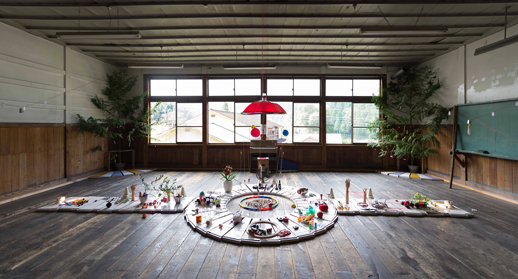
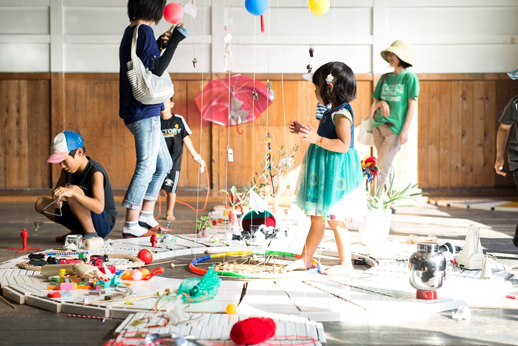
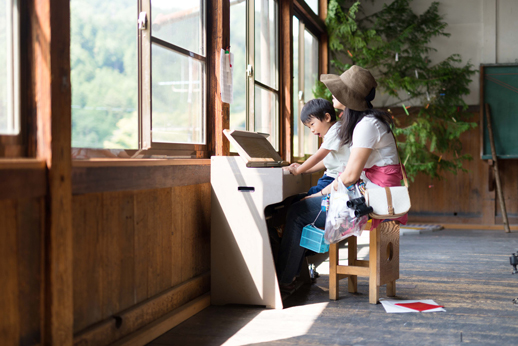
Aya Miyauchi exhibited a range of colorful and interactive installations, each accompanied by sounds from various toys and instruments. “Playful”, the title of her work, is truly the best description for her piece. Miyauchi explained, “I wanted to make the school a lively place again by offering objects filled with positive memories.” The children who saw the work were naturally excited, enjoying the chance to freely interact with all the different objects; Meanwhile, adults enjoyed a taste of being a kid again. Viewers became part of the installation, which changed continuously in response to their interactions. In this way, “Playful” managed to occupy a space beyond the school building itself – even before seeing the work, one could hear the sounds of children’s laughs and shrieks as people engaged with it.
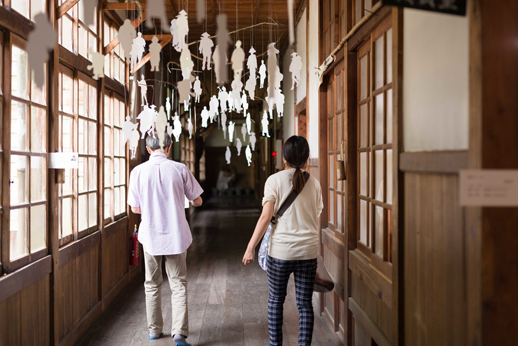
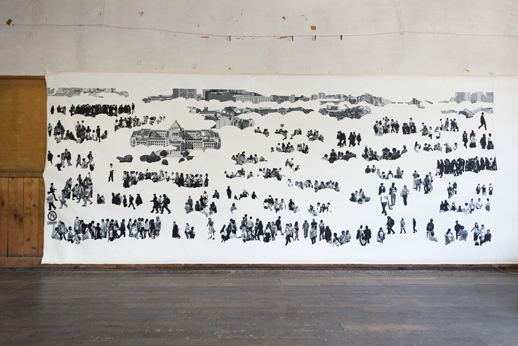
Kaoru Soeno pushed her practice to ambitions of a new scale with an impressively sized painting, as well a site specify-piece entitled “Kisoji”. For the latter work, she cut out and hung from the ceiling silhouettes of traditional clothing worn at the local annual festival, Bunka Bunsei Fuzoku Emaki (Picture Scrolls of Customs from the Bunka-Bunsei Era). The comings and goings of visitors through the hallway created a subtle movement in the figures, as if bringing them to life while at the same time evoking childhood memories of making decorative mobiles.
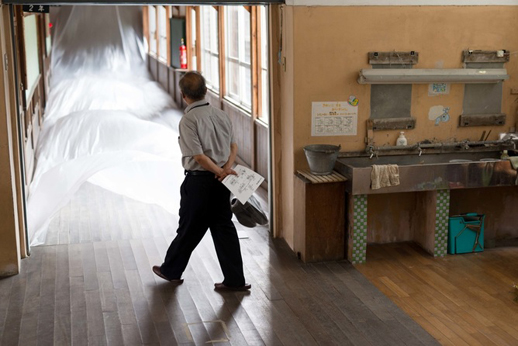
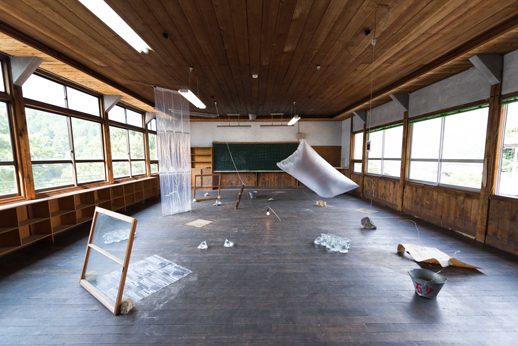
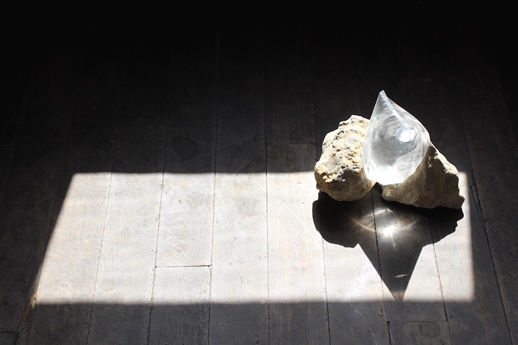

As for myself, I exhibited a site-specific work titled “Into the Mist.” This moving installation encompassing the entire hallway referenced the fog and river of Nagiso. Another installation, “Habitation,” consisted of various objects, videos, and photographs all retrieved from the school building or taken from the surrounding area. The way in which the objects were carefully and precariously placed echoed the state of the school building and the nature of the district. As a viewer walked through the space, various aspects of the work – the sound of a drop of water hitting the bottom of a bucket, or the reflection in the glass, for instance – came alive at different moments, hinting at another dimension occupied by other objects to be discovered. The work changed its appearance depending on the weather and time of the day. When the sunlight hit the plastic bags filled with water, it created beautiful light throughout the space.
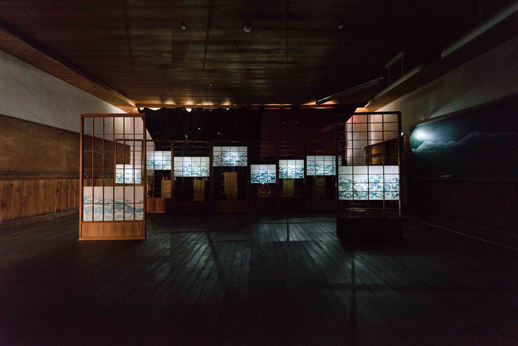
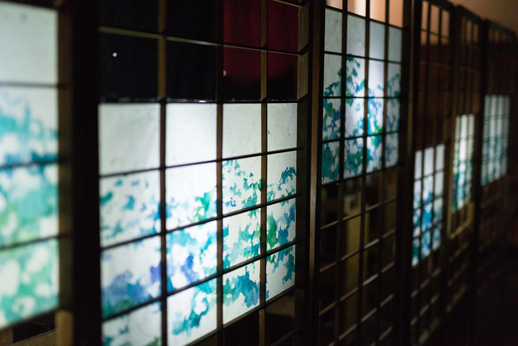
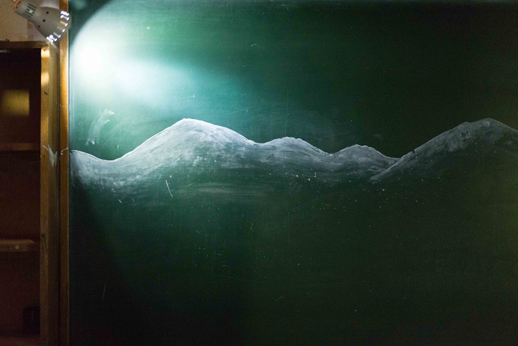
Eri Ito’s work used materials from the local environment in installations that contemplated Nagio’s relationship with nature. “In the Mountain” was an immersive experience: the viewer entered a dark room and found old, traditional Japanese shoji screens with paintings of mountains on washi paper. The screens and paper were positioned at different distances and heights, creating dimensional depth combined with a tangible sense of the beauty of the Nagiso landscape. While viewers were able to see the mountains from outside of the school during the day, through Ito’s work they experienced the unique landscape in a night setting.
The school brought nostalgic memories of the past, but was also refreshed with artwork that engaged with and referenced the space, its history, and the surrounding area. Yasuko Matsui, a home-stay family member who had studied at the elementary school, explained “the art encompassed everything: materials, thoughts, memories, feelings, and places…there was a wind of freshness in the show and I hope this ‘wind’ will lead to the revitalization of the town.”
For the artists, the school building and the Nagiso area were inspiring and energizing places to create art and take up the challenge of bringing new dimensions to their work. To community members and visitors, the building became a meeting point where people gathered to see and experience contemporary art rarely encountered in Nagiso and gain new perspectives. For the town, a building which had been closed and unused for many years became once again a space of dynamism and energy. The real success of NAIR, however, came from the moments when the artists, the locals, and the town interacted with one another and created a renewed and vivid sense of community.
To see more information and pictures of the event, have a look here: http://n-air.weebly.com
All other photos: Anna Gonzalez Noguchi
Anna Gonzalez Noguchi
Anna Gonzalez Noguchi


